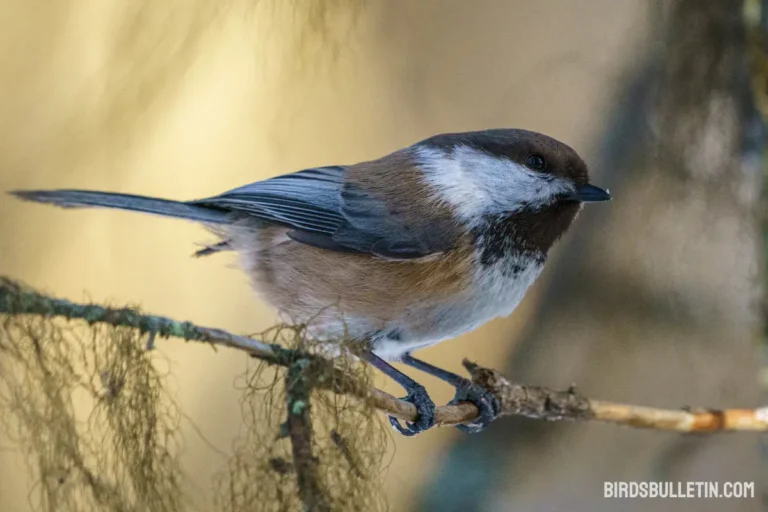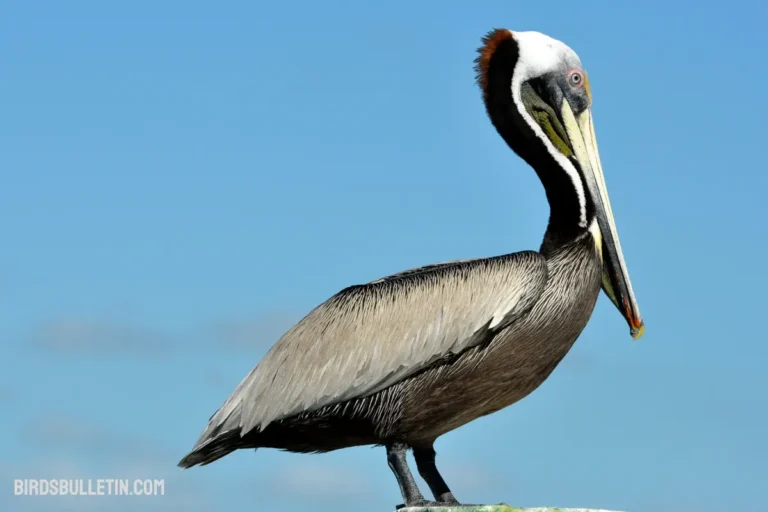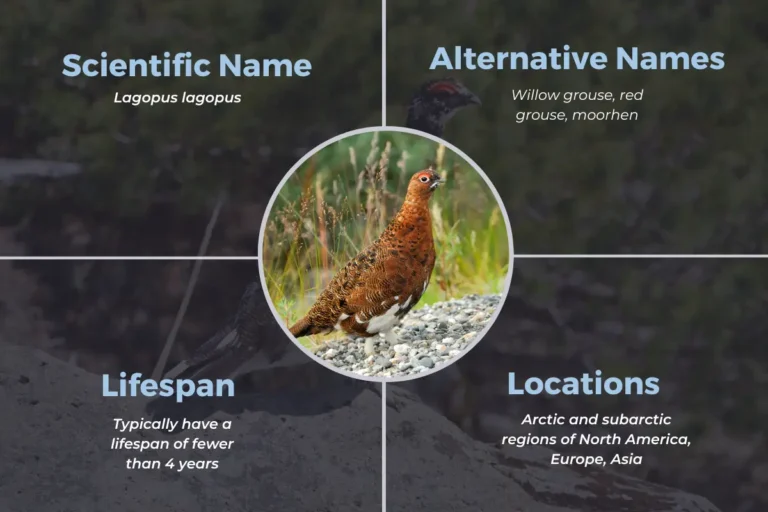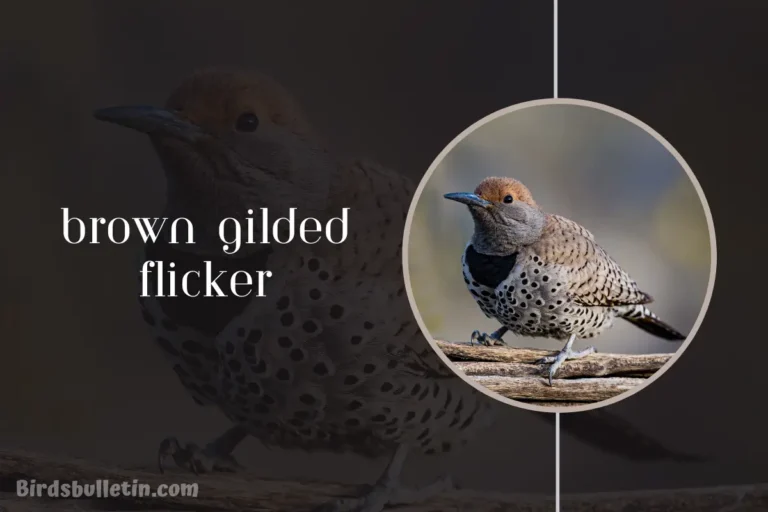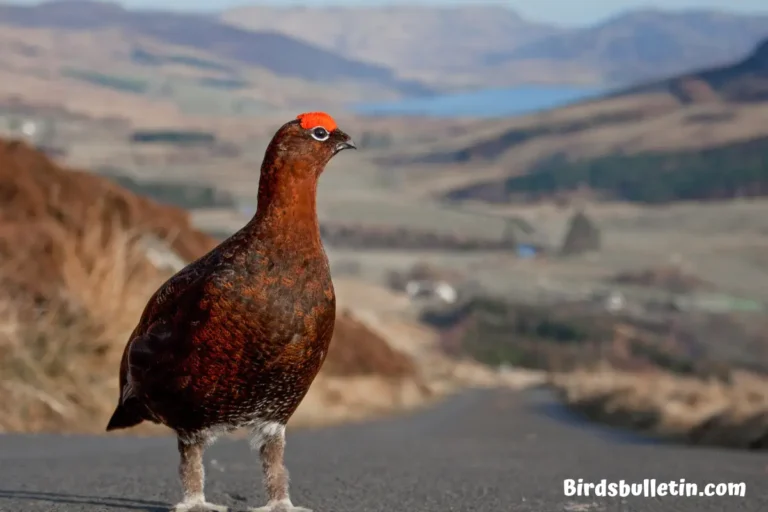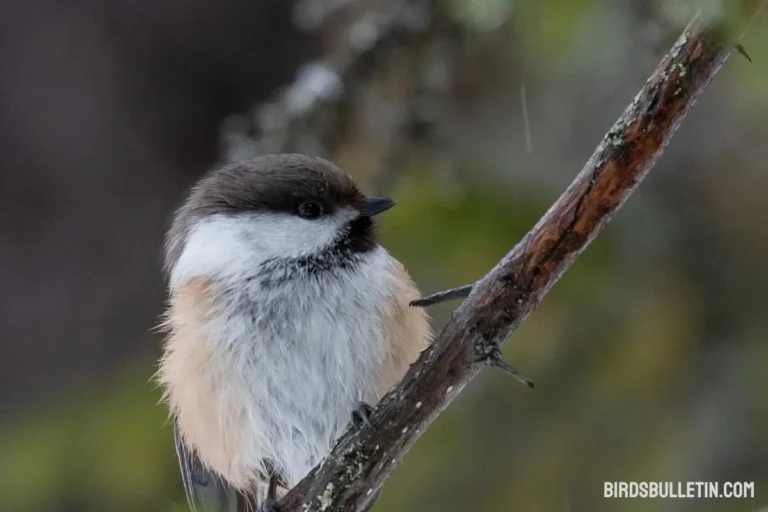Lagopus Lagopus Leucoptera Overview
The white-winged ptarmigan (Lagopus lagopus leucoptera) is a subspecies of the willow ptarmigan that is native to northernmost Canada and its Arctic islands.
This average-sized grouse is well adapted to the harsh conditions of the tundra environment. The white-winged ptarmigan plays an important role in its fragile Arctic ecosystem.
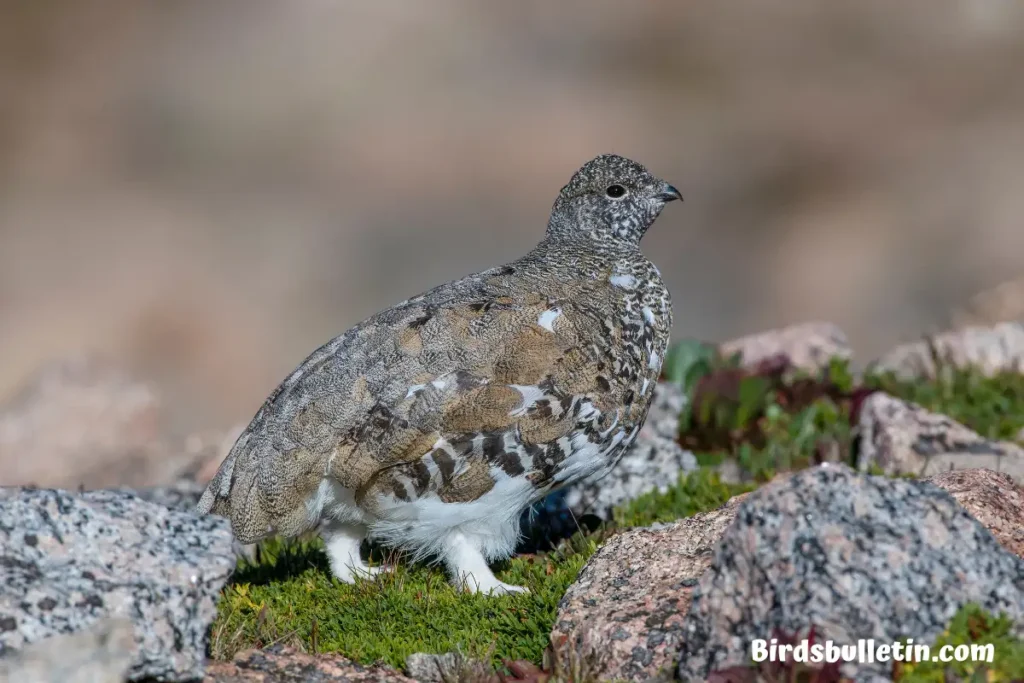
Looking for more overview about bird subspecies:
Scientific Classification
- Kingdom: Animalia
- Phylum: Chordata
- Class: Aves
- Order: Galliformes
- Family: Phasianidae
- Genus: Lagopus
- Species: L. lagopus
- Subspecies: L. l. leucoptera
The white-winged ptarmigan is one of 16 recognized subspecies of the willow ptarmigan (Lagopus lagopus). This widespread circumpolar species exhibits significant geographic variation in size and plumage.
Identification
The white-winged ptarmigan is a medium-sized grouse with cryptic white plumage. In winter, its feathers are immaculate white except for a black tail. During summer months, its plumage has more brown, gray, and black mottling for camouflage against the tundra.
Distinguished by its name, this subspecies has conspicuous white wings all year round. It has feathered feet and a sharply curved bill. Males are larger than females.
Location
The white-winged ptarmigan is found in northernmost Canada across much of the mainland Arctic tundra as well as Victoria Island, King William Island, and other Arctic islands.
Its range overlaps with several other subspecies of the willow ptarmigan. It inhabits open tundra dominated by low-growing shrubs and willow thickets.
Interesting Facts
- Ptarmigan have feathered feet that act like snowshoes, allowing them to walk on top of snow.
- Their camouflaged plumage allows them to blend into the tundra environment.
- Ptarmigan goes through two molts per year to change their plumage with the seasons.
- They eat willow buds and twigs in winter, supplementing their diet with berries in summer.
- The male’s loud territorial call can be heard over a mile away.
- They nest on the ground, with females laying up to 12 eggs per clutch.
Status And Conservation
The white-winged ptarmigan has a large range and is not considered globally threatened. However, it faces some pressure from habitat disturbance and hunting. Protecting intact tundra habitat will be important for preserving ptarmigan populations into the future.
Climate change also poses a potential threat to its specialized Arctic ecosystem. The species is considered of Least Concern by the IUCN Red List.
Frequently Asked Questions
01. What does the white-winged ptarmigan eat?
The white-winged ptarmigan is herbivorous, feeding mainly on willow twigs and buds during winter. It supplements its diet with berries and seeds in the summer months when plant growth is more abundant.
02. How does the white-winged ptarmigan survive the extreme Arctic winters?
To survive frigid Arctic winters, the white-winged ptarmigan has insulating cryptic white plumage that allows it to blend into the snowy landscape. Its feathered feet act like snowshoes, enabling it to walk on top of the snow to forage for food.
03. Why does the white-winged ptarmigan molt its plumage twice per year?
The white-winged ptarmigan molts twice a year to change its plumage to match the seasons. In winter, it has pure white plumage to camouflage with the snow. In spring, it molts to gain more brown, gray, and black feathers for summer camouflage against the tundra vegetation and ground.
Summary
The white-winged ptarmigan is a subspecies of ptarmigan uniquely adapted to survive in the extreme Arctic environment of northern Canada. With cryptic plumage, feathered feet, and seasonal molts, this grouse is well suited to the open tundra habitat.
As a prey species, it also plays a key role in the northern food web. Continued preservation of pristine Arctic habitat will help ensure the future of this subspecies.


